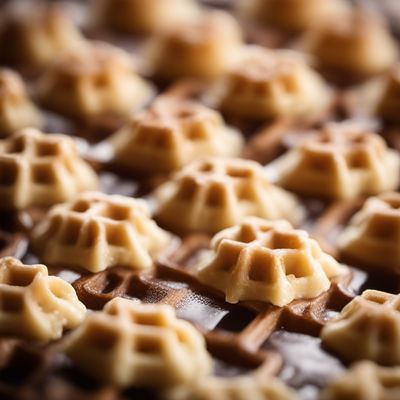
Ingredient
Chemically leavened doughs
The Magic of Baking: Chemically Leavened Doughs
Chemically leavened doughs are made by combining flour, a leavening agent (such as baking powder or baking soda), liquid, and other ingredients. When the leavening agent reacts with the liquid and heat, carbon dioxide gas is released, causing the dough to rise. The resulting texture is typically soft, tender, and slightly crumbly, depending on the specific recipe and technique used.
Origins and history
The concept of chemically leavened doughs can be traced back to ancient civilizations, where early bakers discovered the leavening properties of ingredients like sour milk and ashes. However, it was not until the 19th century that baking powder was invented, revolutionizing the world of baking and making it easier to create light and fluffy baked goods.
Nutritional information
Chemically leavened doughs can vary in their nutritional content depending on the specific recipe and ingredients used. However, they generally provide carbohydrates, some protein, and small amounts of fat. The nutritional profile can be further enhanced by incorporating whole grains or healthier alternatives in the dough.
Allergens
May contain allergens such as wheat, gluten, eggs, or dairy, depending on the specific recipe and ingredients used.
How to select
When selecting chemically leavened doughs, opt for reputable brands or trusted recipes. Ensure that the leavening agents are fresh and within their expiration date. Additionally, check for any specific dietary requirements or allergens that may be present in the dough.
Storage recommendations
To maintain the freshness and quality of chemically leavened doughs, store them in airtight containers or wrap them tightly in plastic wrap to prevent them from drying out. Keep them in a cool, dry place away from direct sunlight or heat sources.
Preparation tips
Chemically leavened doughs can be used to create a wide variety of baked goods, including cakes, muffins, quick breads, biscuits, scones, and cookies. Follow specific recipes and techniques to ensure the desired rise and texture in your baked goods.
Culinary uses
Chemically leavened doughs are widely used in baking, particularly in Western cuisines. They are the foundation for classic treats like chocolate chip cookies, fluffy pancakes, and tender biscuits. These doughs are also popular in creating quick breads like banana bread or zucchini bread.
Availability
Chemically leavened doughs are commonly available in grocery stores, supermarkets, and specialty baking supply stores worldwide.


